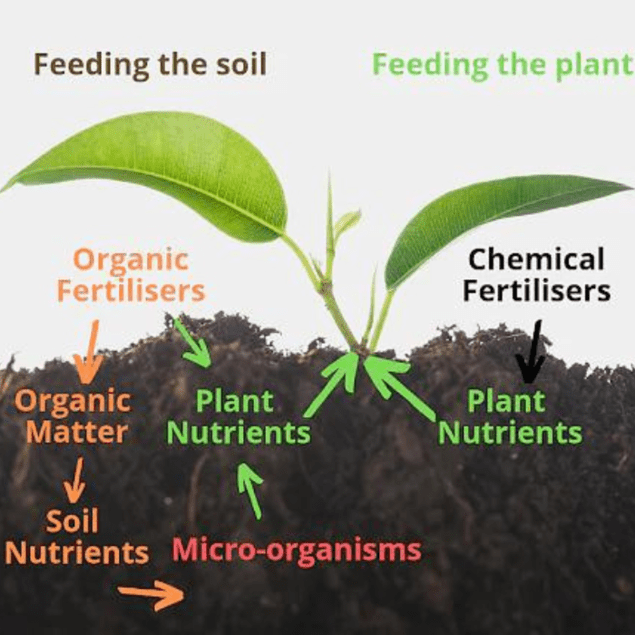Organic and Inorganic Fertilisers
Why Organic Fertilizer
Why Organic Fertilizer
Organic fertilizers are naturally available mineral sources that contain moderate amount of plant essential nutrients. They are capable of mitigating problems associated with synthetic fertilizers. Soils with large amounts of the organic matter remain loose and light, retain more water and nutrients and promote the growth of soil microorganisms, thereby improving plant health and root development. They reduce the necessity of repeated application of synthetic fertilizers to maintain soil fertility. Organic fertilizers differ from chemical (Inorganic)fertilizers in that they provide nutrients for your plants while creating healthy soil. They gradually release nutrients into the soil solution and maintain nutrient balance for healthy growth of crop plants. They also act as an effective energy source of soil microbes which in turn improve soil structure and crop growth. Organic fertilizers are generally thought to be slow releasing fertilizers and they contain many trace elements widely used for vegetables (tomatoes, lettuce, cucumber), fruits (strawberries, grapes, citrus). They are safer alternatives to chemical fertilizers. However, the improper use of organic fertilizers leads to overfertilization or nutrient deficiency in the soil. Hence, controlled release of organic fertilizers is an effective and advanced way to overcome these impacts and maintain sustainable agriculture yield.
Why Not Chemical Fertilizer
Why Not Chemical Fertilizer
Chemical fertilizer overuse can contribute to soil acidification and soil crust, thereby reducing the content of organic matter, humus content, beneficial species, stunting plant growth, altering the pH of the soil, growing pests, and even leading to the release of greenhouse gases. The world’s oceans are suffering under an increase of dead zones, areas of low oxygen levels, which cause aquatic life to suffocate and die. There are now over 245,000 square kilometers of dead zones in our oceans. This is also a major problem in lakes and water reservoirs – and the main culprit is chemical fertilizer runoff.





